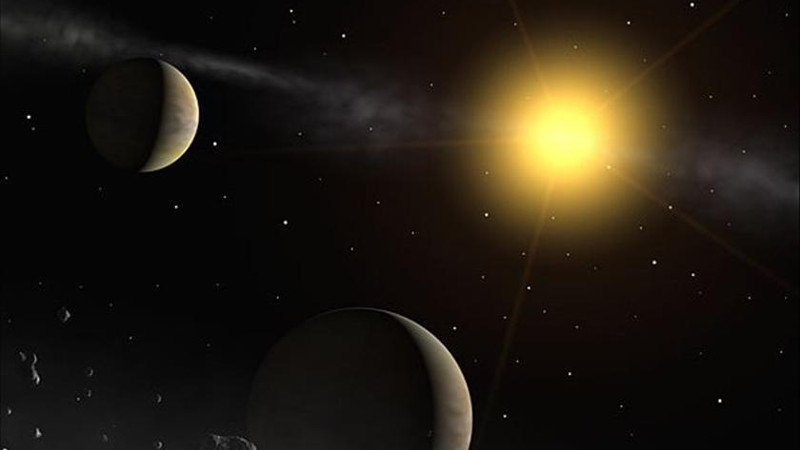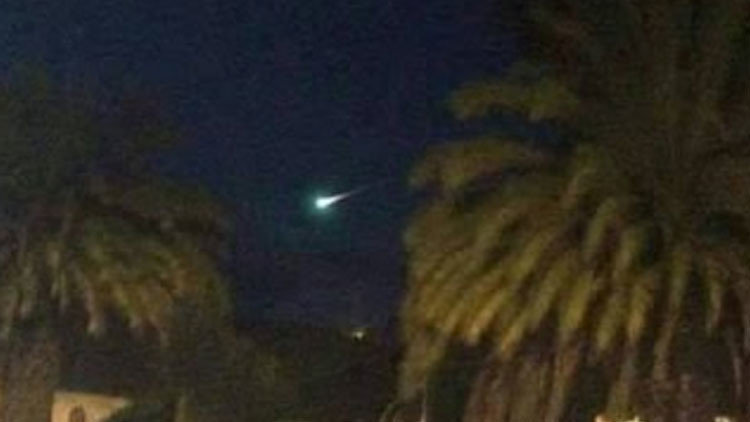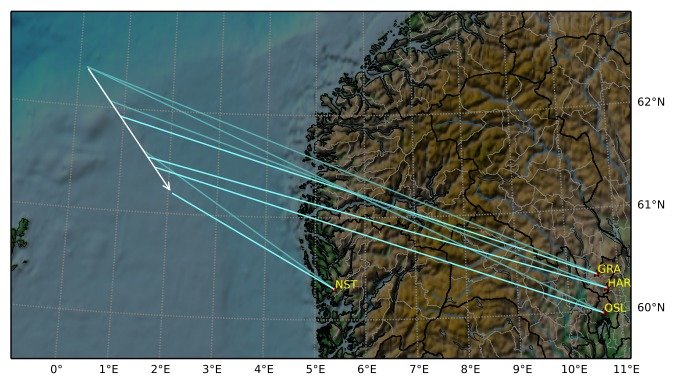OF THE
TIMES


"I was actually pulling the curtains in the morning at the windows at the back of my sitting room and saw [the first fireball] between the trees. I then got my phone camera and ran outside with my daughter and stood at the side of the garden taking photos. I was able to get a clearer picture from there so was sure what I was seeing.Below are two images of the fireballs photographed by Ms. Owens.
I've watched enough videos about meteors/fireballs, so I knew what these were. I was excited to see one, but then to see 3 more straight after was amazing. They came in one after the other. They were white and had a brighter front. The end of the tails were sort of wiggly and breaking up. They were going really fast and I heard a bang, but only from one of them."

Comment: The American Meteor Society (AMS) received over 110 reports about a fireball seen over IL, MI, IN, Ontario and KY on Monday, December 26th 2016 around 22:52 UT.